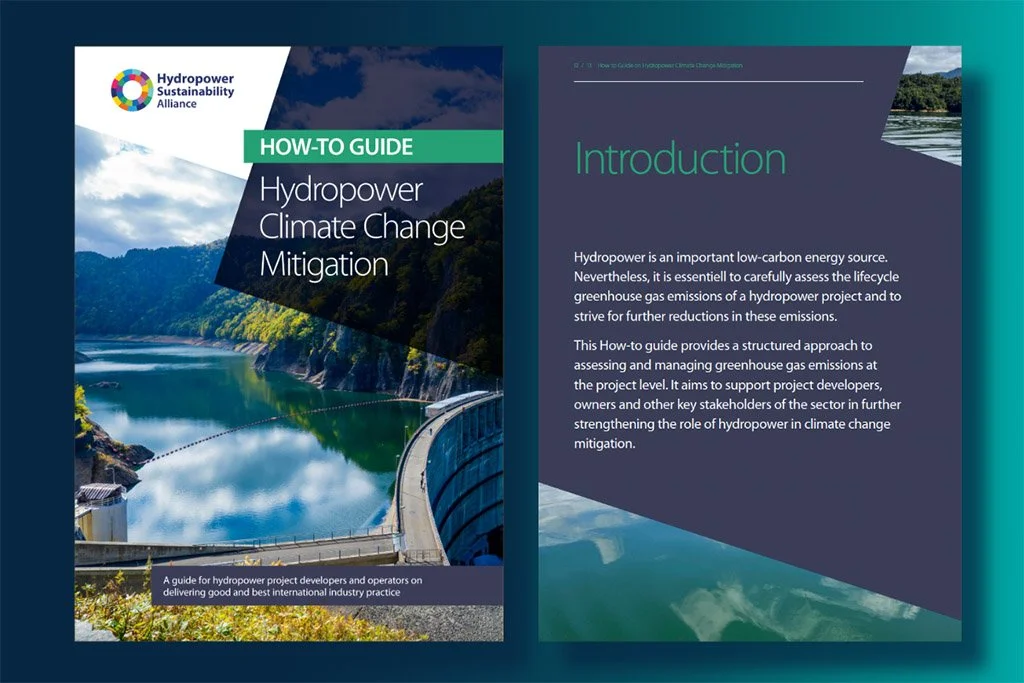New guide outlines structured approach for climate change mitigation in hydropower
The Hydropower Sustainability Alliance has released a new How-to Guide on Hydropower Climate Change Mitigation, offering practical guidance for assessing and managing greenhouse gas emissions throughout the hydropower project lifecycle.
The publication is the latest in a series of technical how-to guides and complements the How-to Guide on Climate Change Resilience. Together, the two resources set out good and best practices for meeting the climate-related requirements of the Hydropower Sustainability Standard (HSS).
The launch coincides with the conclusion of COP30 in Belém, where discussions on accelerating the phaseout of fossil fuels have highlighted the importance of transparent, credible approaches to climate change mitigation across all sectors.
The new guide provides project developers, operators and regulators with tools to understand and demonstrate low-carbon performance in line with internationally recognised criteria.
What does the Climate Change Mitigation How-to Guide include?
The guide maps out a clear, structured approach for meeting HSS performance requirements on climate change mitigation across preparation, implementation, operation and end-of-life stages.
It includes guidance on:
Estimating and managing project-level greenhouse gas emissions.
Assessing project contributions to wider system-level mitigation.
Aligning assessments with international climate reporting frameworks, including IFRS and regional taxonomy regulations.
Preparing for official HSS assessments or undertaking internal reviews.
Strengthening institutional capacity among regulators and implementing agencies.
Annexes provide additional detail on carbon footprint methodologies, relevant policy frameworks and examples of measures applied in practice.
Why does climate change mitigation matter for the hydropower sector?
While hydropower projects typically have low greenhouse gas emissions over their lifetime, the sector operates under increasing scrutiny from regulators, financiers and reporting frameworks. The guide emphasises the need for consistent, transparent assessment methods and structured management approaches.
Martin Fuchs, Head of Hydro Consulting at AFRY Austria GmbH and lead author of the guide, said: “Hydropower projects generally have low emissions, but demonstrating this requires careful assessment and management. This guide provides a practical framework that project teams can apply from planning through to operation.
“As methodologies and reporting requirements continue to evolve, we wanted to create a resource that supports developers, operators and regulators in applying up-to-date, internationally recognised approaches to climate change mitigation.”
Alain Kilajian, Deputy Executive Director of the Hydropower Sustainability Alliance, said: “Climate change impacts every sector and hydropower is no different. Understanding and managing emissions makes a big difference in how a project performs over time and whether it truly aligns with the low-carbon future we want. With the launch of this new guide, the hydropower sector is raising the bar for carbon emissions testing and reporting for projects all around the world.
“This guide not only collates a vast amount of information into a single, succinct document, but also offers practical, step-by-step measures to help projects move from basic compliance towards best practice in alignment with the Hydropower Sustainability Standard.”
The How-to Guide on Hydropower Climate Change Mitigation reflects the latest methodologies, data and international references. It will be periodically updated as the global knowledge base on climate change mitigation continues to develop.
You can download the guide here.


